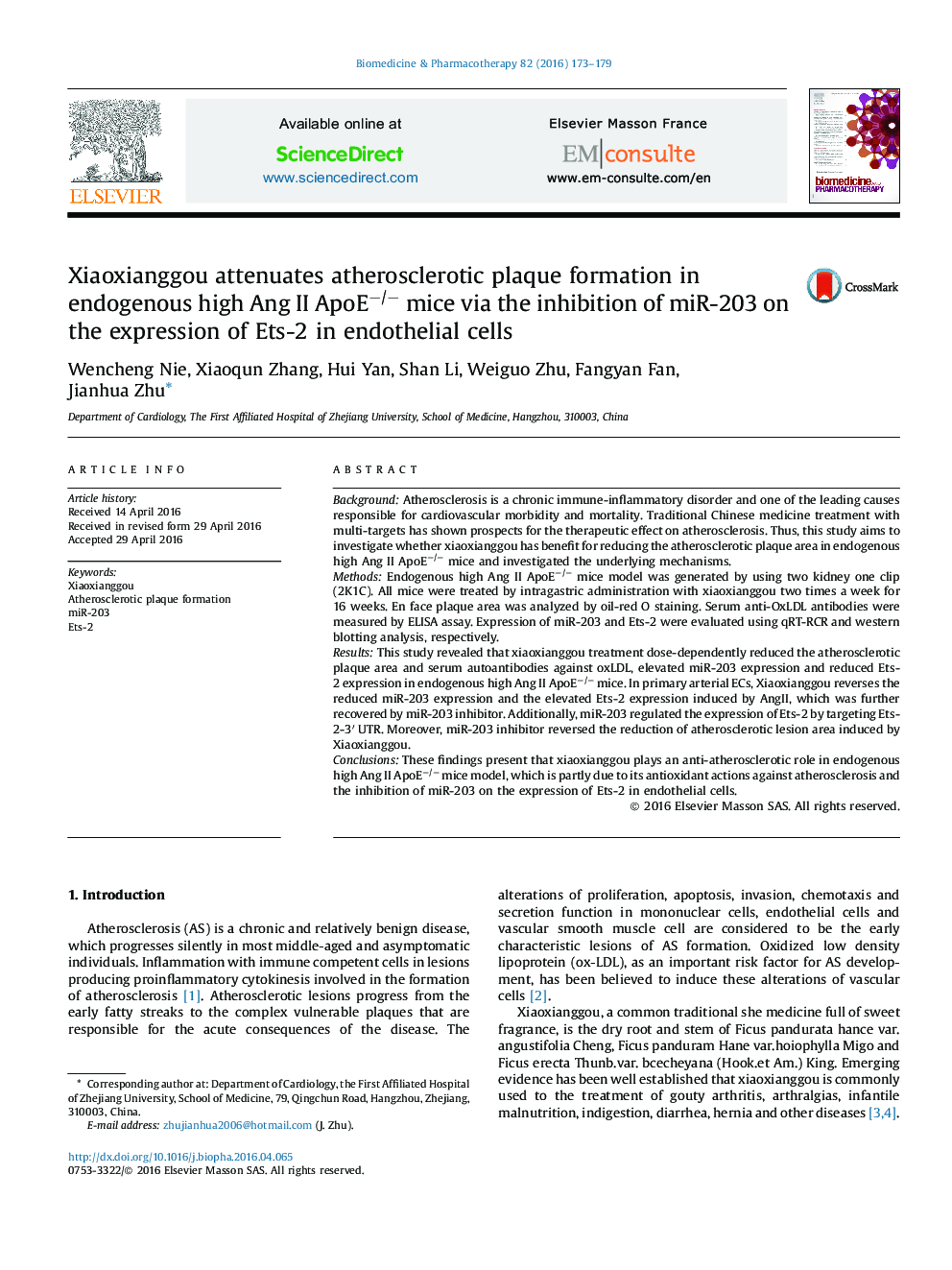| Article ID | Journal | Published Year | Pages | File Type |
|---|---|---|---|---|
| 2524563 | Biomedicine & Pharmacotherapy | 2016 | 7 Pages |
BackgroundAtherosclerosis is a chronic immune-inflammatory disorder and one of the leading causes responsible for cardiovascular morbidity and mortality. Traditional Chinese medicine treatment with multi-targets has shown prospects for the therapeutic effect on atherosclerosis. Thus, this study aims to investigate whether xiaoxianggou has benefit for reducing the atherosclerotic plaque area in endogenous high Ang II ApoE−/− mice and investigated the underlying mechanisms.MethodsEndogenous high Ang II ApoE−/− mice model was generated by using two kidney one clip (2K1C). All mice were treated by intragastric administration with xiaoxianggou two times a week for 16 weeks. En face plaque area was analyzed by oil-red O staining. Serum anti-OxLDL antibodies were measured by ELISA assay. Expression of miR-203 and Ets-2 were evaluated using qRT-RCR and western blotting analysis, respectively.ResultsThis study revealed that xiaoxianggou treatment dose-dependently reduced the atherosclerotic plaque area and serum autoantibodies against oxLDL, elevated miR-203 expression and reduced Ets-2 expression in endogenous high Ang II ApoE−/− mice. In primary arterial ECs, Xiaoxianggou reverses the reduced miR-203 expression and the elevated Ets-2 expression induced by AngII, which was further recovered by miR-203 inhibitor. Additionally, miR-203 regulated the expression of Ets-2 by targeting Ets-2-3′ UTR. Moreover, miR-203 inhibitor reversed the reduction of atherosclerotic lesion area induced by Xiaoxianggou.ConclusionsThese findings present that xiaoxianggou plays an anti-atherosclerotic role in endogenous high Ang II ApoE−/− mice model, which is partly due to its antioxidant actions against atherosclerosis and the inhibition of miR-203 on the expression of Ets-2 in endothelial cells.
